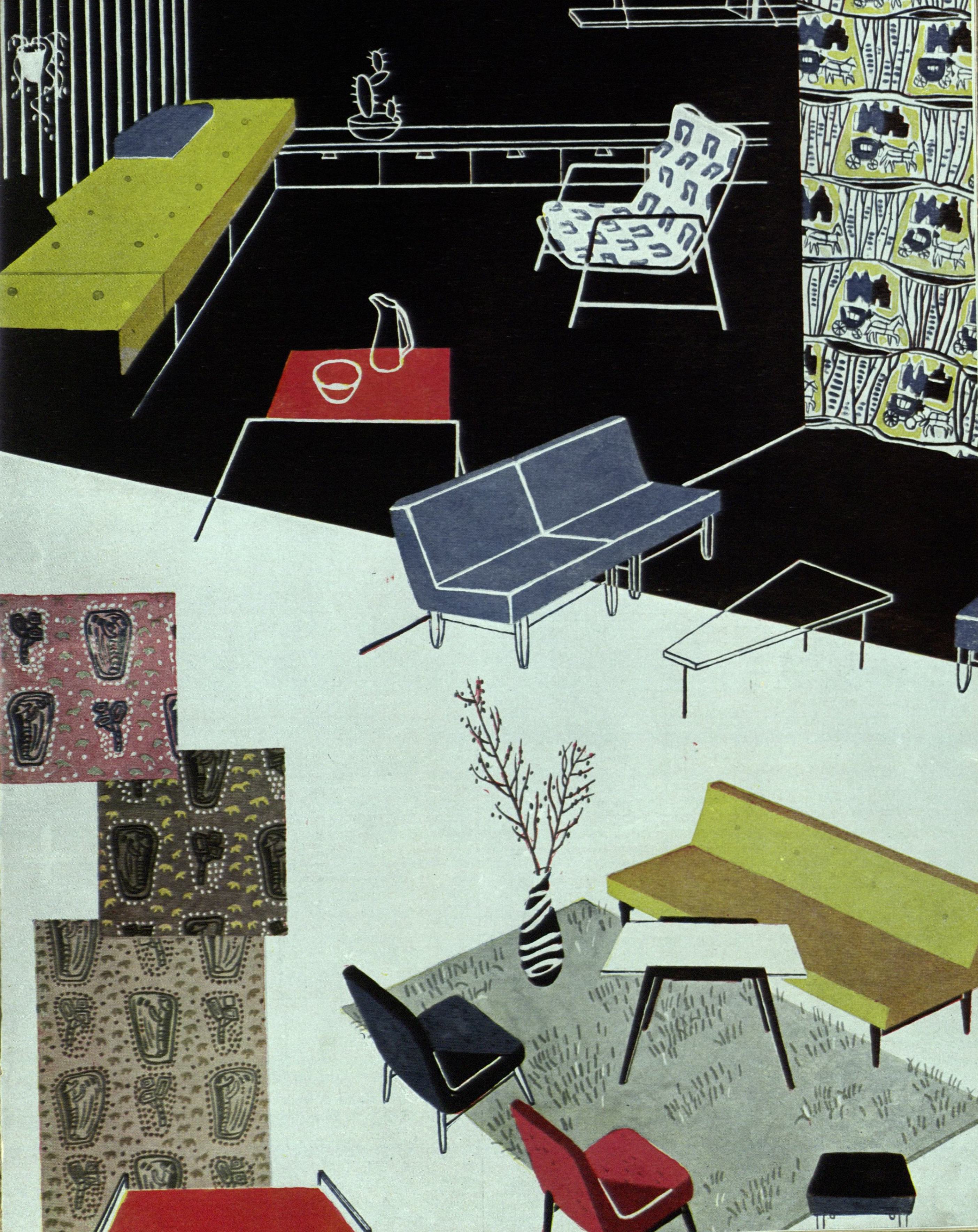Lithuanian textiles modernized as they mastered new techniques and methods to create imagery. The late 1950s and early 1960s saw two styles coexisting side by side: past traditions and contemporary trends. In this regard, Lithuanian textiles differed little than other forms of art that also found it difficult to define a specific starting point for emerging new styles.
Past traditions in textile art were identified with Eastern weaving techniques and figure scenes from folklore and rural celebrations (weddings, harvests) or labor (potato, flax or rye harvesting), incorporated into several horizontal panels within a larger woven plane, as well as ornamental rugs fashioned in a folk style. The ancient practice of creating decorative compositions made up of several bands, embraced and taught by Kaunas Applied and Decorative Arts Institute instructor Liudas Truikys, was quite popular in the Stalinist era since the design facilitated the presentation of several images from different time periods in one creation. The influence of Lithuanian folk art on such rugs is demonstrated by the stylization of the pattern, the often inconspicuous color palette, and by text inserted into the composition, usually at the bottom of a carpet or used to divide the space into ribbons of landscape.
This compositional principle, permitting several moments of a storyline to be depicted at once, thus avoiding a literary narrative, is illustrated by one of the most beautiful Lithuanian textile works from this period, Vladas Daujotas' 1957 knotted carpet Trys seselės rengė brolelį į karą (Three Sisters Prepared Their Brother For War). A second copy of this carpet is stored at the M. K. Čiurlionis National Art Museum in Kaunas, since the original was purchased at an exhibition in Moscow as a gift from the Soviet Union to Mao Zedong, then leader of China.
Another example of the post-war Lithuanian textile tradition is the well-known knotted carpet by Juozas Balčikonis entitled Ralio, karvytės (Ralio, Dear Cows), made in 1959, showing young herders watching over their cows. The carpet is asymmetrical in composition and yet constrained, with a detailed and precise pattern decorated with fine ornamentation. The work does not, however, exhibit the monumental force so characteristic of later works by Balčikonis.
As much as the folkloric and lyrical mood of these carpets and their ornamental patterns may delight us, they nevertheless belong to a past tradition, one of meticulous and detailed imagery that demanded considerable labor and materials. Moreover, the media of the day continuously drove home the belief that “what is most important today is to achieve maximum expression with the simplest of measures, demonstrating the beauty and texture of natural materials. The decoration of artworks [comes from] details, planes of color, clear and expressive pattern contours, rhythmically placed and coordinated outlines or ornamental motifs that derive from the material itself or the nature of the technique employed to create the work.” Taikomoji-dekoratyvinė dailė: Albumas, sudarytojas Stasys Pinkus, įžangos autoriai Tadas Adomonis ir Stasys Pinkus, Vilnius: Mintis, 1965, p. 5. Not only decorative arts, but also painting, graphic art and sculpture began to see a predominance of large, abstracted planes and simplified patterns.
Post-war explorations came to a natural conclusion with the advent of a transitional period characterized by Eastern-style knotted carpets. In Derliaus nuėmimas (Reaping the Harvest, 1961) by Sofija Vasilenkaitė-Vainilaitienė and Verpėjos (Spinners, 1962) by Ramutė Jasudytė, the thick Eastern knotting characteristic of the post-war period was matched with innovative imagery, figures and other elements to create abstracted, colorful planes.




Comments
Write a comment